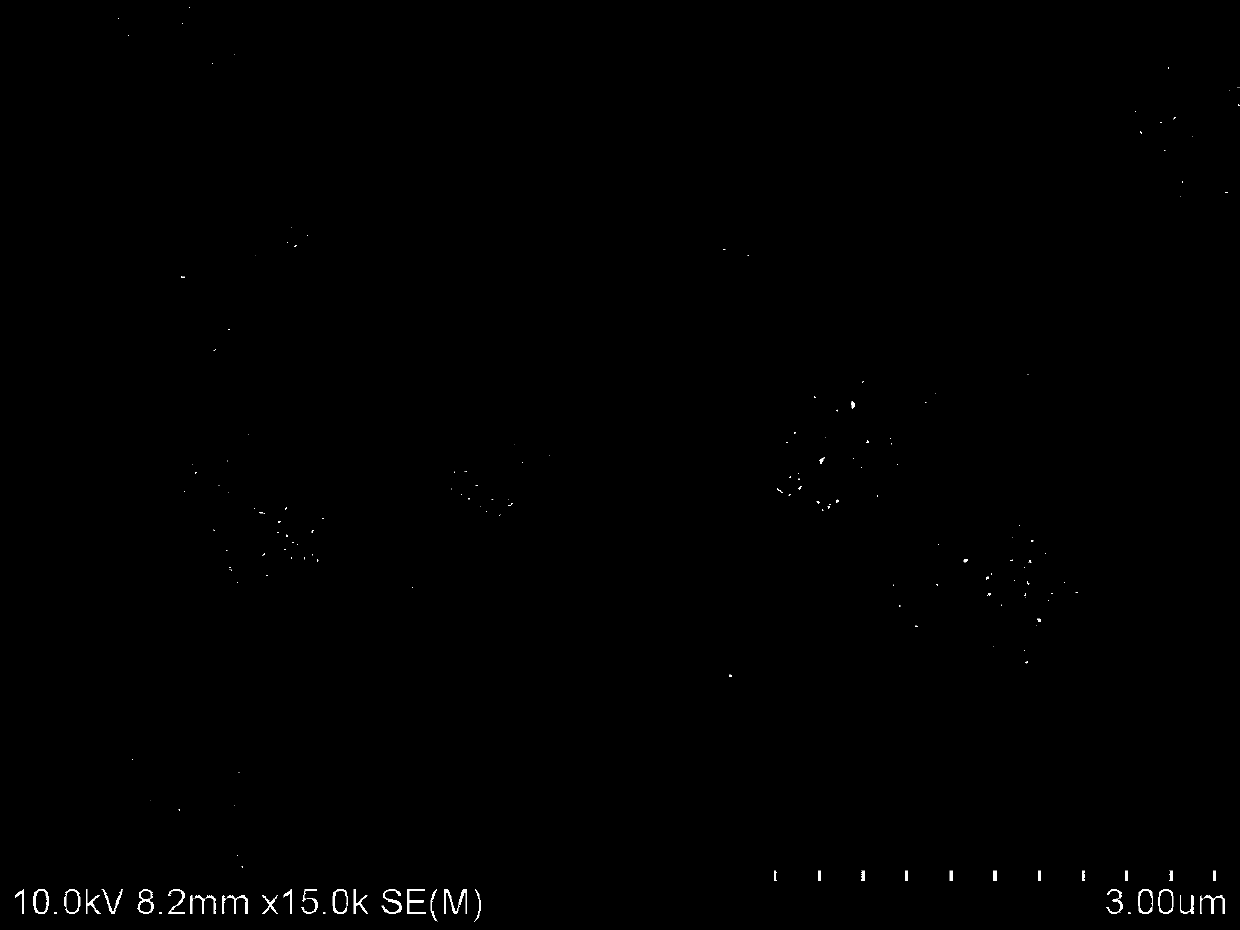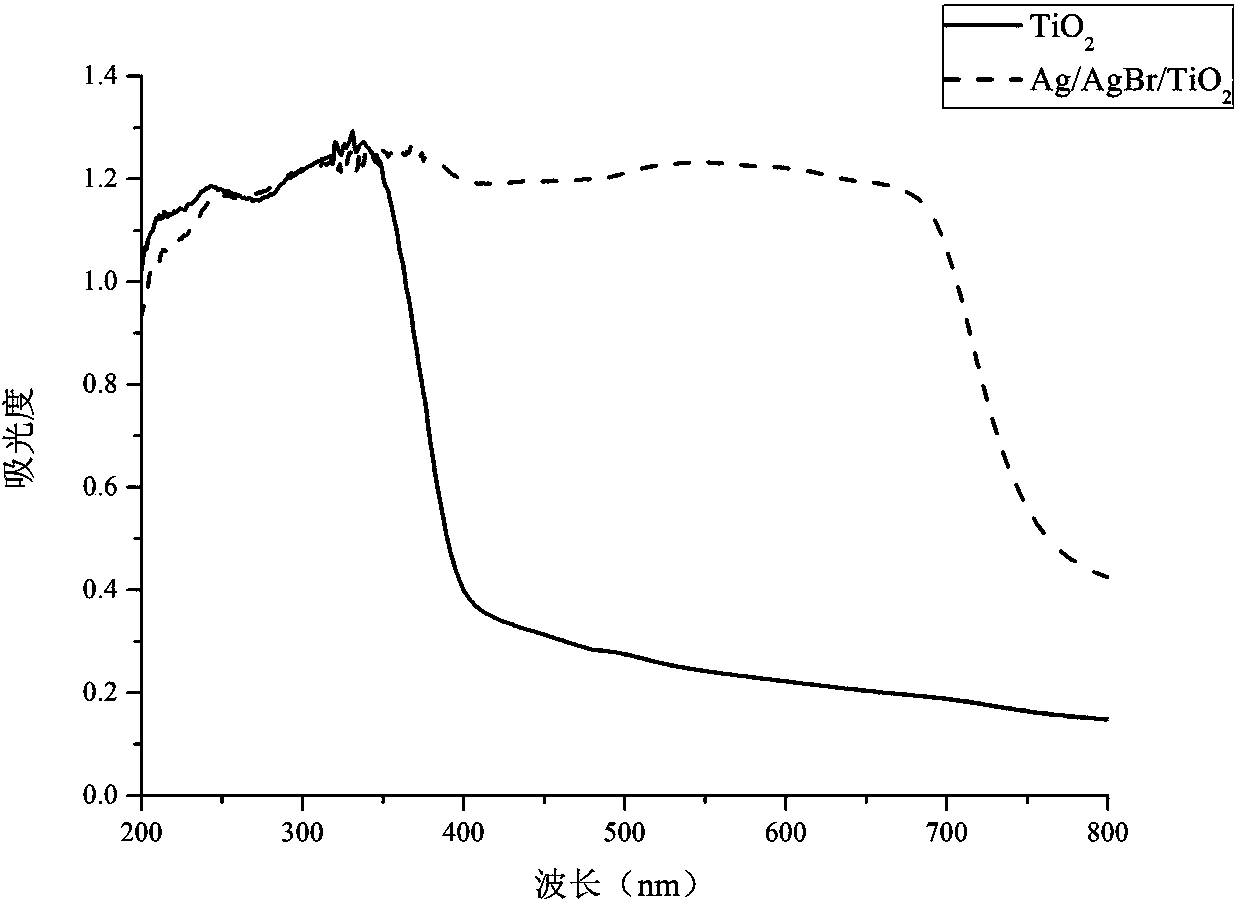Preparation method of 3D-shaped silver/silver bromide/titanium dioxide catalyst
A technology of titanium dioxide and silver bromide, which is applied in the field of preparation of titanium dioxide photocatalysts, and can solve problems such as preparation methods that have not been reported
- Summary
- Abstract
- Description
- Claims
- Application Information
AI Technical Summary
Problems solved by technology
Method used
Image
Examples
Embodiment 1
[0018] First, the titanate (isopropyl titanate or tetrabutyl titanate) and concentrated hydrochloric acid are mixed and stirred uniformly. The molar ratio of titanate to hydrochloric acid is 1:50. Add cetyltrimethylammonium bromide (CTAB) to deionized water, mix and stir well. The CTAB aqueous solution was added dropwise to the titanate solution and stirred for 1 hour. The molar ratio of titanate to CTAB is 1:0.5, and the molar ratio of titanate to water is 1:2000. Add a certain amount of ethylene glycol and urea to the above-mentioned mixed solution of titanate and CTAB, and stir evenly. The molar ratio of titanate to ethylene glycol is 1:1000, and the molar ratio of titanate to urea is 1:20. The above-mentioned mixed solution was added to a 100mL hydrothermal kettle, and hydrothermally reacted at 150°C for 24h to generate 3D morphology titanium dioxide. Add silver nitrate and 2mL ammonia to the suspension containing 3D titanium dioxide obtained by hydrothermal reaction, st...
Embodiment 2
[0021] First, the titanate (isopropyl titanate or tetrabutyl titanate) and concentrated hydrochloric acid are mixed and stirred uniformly. The molar ratio of titanate to hydrochloric acid is 1:100. Add cetyltrimethylammonium bromide (CTAB) to deionized water, mix and stir well. The CTAB aqueous solution was added dropwise to the titanate solution and stirred for 1 hour. The molar ratio of titanate to CTAB is 1:1, and the molar ratio of titanate to water is 1:1000. Add a certain amount of ethylene glycol and urea to the above-mentioned mixed solution of titanate and CTAB, and stir evenly. The molar ratio of titanate to ethylene glycol is 1:2000, and the molar ratio of titanate to urea is 1:20. The above-mentioned mixed solution was added to a 100mL hydrothermal kettle, and hydrothermally reacted at 150°C for 24h to generate 3D morphology titanium dioxide. Add silver nitrate and 2mL ammonia to the suspension containing 3D titanium dioxide obtained by hydrothermal reaction, sti...
Embodiment 3
[0024] First, the titanate (isopropyl titanate or tetrabutyl titanate) and concentrated hydrochloric acid are mixed and stirred uniformly. The molar ratio of titanate to hydrochloric acid is 1:200. Add cetyltrimethylammonium bromide (CTAB) to deionized water, mix and stir well. The CTAB aqueous solution was added dropwise to the titanate solution and stirred for 1 hour. The molar ratio of titanate to CTAB is 1:1, and the molar ratio of titanate to water is 1:2000. Add a certain amount of ethylene glycol and urea to the above-mentioned mixed solution of titanate and CTAB, and stir evenly. The molar ratio of titanate to ethylene glycol is 1:2000, and the molar ratio of titanate to urea is 1:40. The above-mentioned mixed solution was added to a 100mL hydrothermal kettle and reacted hydrothermally at 150°C for 12h to generate 3D morphology titanium dioxide. Add silver nitrate and 2mL ammonia to the suspension containing 3D titanium dioxide obtained by hydrothermal reaction, stir...
PUM
 Login to View More
Login to View More Abstract
Description
Claims
Application Information
 Login to View More
Login to View More - R&D
- Intellectual Property
- Life Sciences
- Materials
- Tech Scout
- Unparalleled Data Quality
- Higher Quality Content
- 60% Fewer Hallucinations
Browse by: Latest US Patents, China's latest patents, Technical Efficacy Thesaurus, Application Domain, Technology Topic, Popular Technical Reports.
© 2025 PatSnap. All rights reserved.Legal|Privacy policy|Modern Slavery Act Transparency Statement|Sitemap|About US| Contact US: help@patsnap.com


